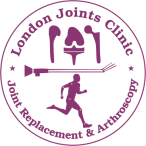Patient Specific Instrumentation
Patient specific instrumentation (PSI) is a modern technique in total knee replacement (TKR) aiming to facilitate the implant of the prosthesis. The customized cutting blocks of the PSI is generated from pre-operative three-dimensional model, using computed tomography (CT) or magnetic resonance imaging.
The success of a TKR depends on knee alignment, gap kinematics and soft tissue balancing, and all three depend on the proper position of the components.
The PSI guide takes into account any joint deformities or osteophytes and applies preoperative planning for bone resection, using the pre-determined implant size, position, and rotation. The apparent benefits of this technology are that neutral post-operative alignment is more reproducible, surgical time is decreased, and the entire procedure become efficient and cost-effective.
The use of PSI is indicated for advanced osteoarthritis, severe pain, difficulties with daily activities and functional limitations. In addition to these, PSI is indicated when intra-medullary guides cannot be used. For example, when there is a post-traumatic femoral deformity.
PSI facilitates cutting guides by creating a 3-dimensional (3D) model of the knee preoperatively, using CT or MRI scans and a full-leg antero-posterior radiograph. With a specific software programme, the manufacturing engineers turn 2D CT or MRI images into 3D representations of the knee and lower limb. Using these 3D images, the anatomical landmarks of the knee are easily identified. A preoperative planning with bony resections is then created and presented to the operating surgeon. Using a specific software, the operating surgeon is then able to evaluate the 3D planning of the TKR with the bony resections. During this phase, the surgeon is able to approve or modify the pre-operative plan, adjusting the tibial and femoral bone resections, as needed. In this phase, it is also possible to accurately plan the depth and the coronal orientation of the resection, as well as the rotation and the slope of the cuts. The rotation of the femoral implant is based on the trans-epicondylar axis. The tibial rotation is controlled and set-up according to the anterior tibial tuberosity. After receiving confirmation from the operating surgeon, custom cutting guides that fit on the patient’s native anatomy are manufactured and then sent to the surgeon.
The PSI femoral guides are used to determine the valgus angle, level of resection, alignment, rotation, and size of the femoral component. The patient-specific tibial guides are used to determine tibial alignment, level of resection, and tibial slope and rotation. Usually, 3 to 4 weeks are required to the final production of these cutting guides.
During surgery, the PSI guides are either used directly as slotted cutting guides or for an accurate pin positioning, using standard resection instrumentation for the bony cuts. The cutting guides are used for the primary distal femoral cut and proximal tibial cut. The subsequent bone cuts are achieved with standardised instrumentation. If the resections do not appear well aligned or orientated from the operating surgeon’s point of view, intraoperative modifications can be made by using standard instrumentation for additional femoral and tibial cut.
Using MRI-based PSI, it is mandatory to leave cartilage, osteophytes and bone spurs as they act as a reference for cutting guide positioning. On the other hand, using a CT-based PSI, the cartilage and especially the soft tissues above the cutting blocks contact points must be accurately removed using electrocautery in order to properly expose the bone before pin fixation. These steps are compulsory, knowing that the CT-scan hardly detects cartilage or soft tissues during the planning. Without it, the CT-based PSI could be unstable and as a consequence, fail. The remaining procedure is then carried out as a usual TKR procedure.
The benefits of PSI technology for Total Knee Replacement are significant in terms of optimised patient outcomes, safety and healthcare economics.
- Use of advanced software that allows 3D reconstruction of the joint and supports all
implant sizes
- The restoration of the mechanical axis
- Special consideration given to the rotational alignment of the tibial tray
- Optimised patella tracking
- Personalised posterior slope
- Restoration of the joint kinematics
- Disposable instrumentation
- Minimised risk of cross contamination
- Instrument sterilisation & processing costs are saved
- Replacement / refurbished instrumentation not needed saving costs
Book An Appointment
Private Clinics : Locations & Directions
London Joints Clinic (Pune)
Address
Office S 5, 2nd Floor, North Block, Sacred World Mall,
Opp Sacred Heart Township, Near Jagtap Chowk,
Wanawadi, Pune 411040
Monday to Saturday
6 PM to 9 PM
Appointments
Hospitals OPDs : Locations & Directions
Jupiter Hospital (Baner)

Address
Lane 3, Baner- Balewadi Road,
Prathamesh Park,
Baner, Pune 411 045
Monday to Saturday 11 AM to 4 PM
Appointments
Contact us
Dr Anand Jadhav has a centralised appointment system for all locations across various hospitals and clinics in Pune & PCMC areas
Appointment Bookings & Requests can be made by any method :

